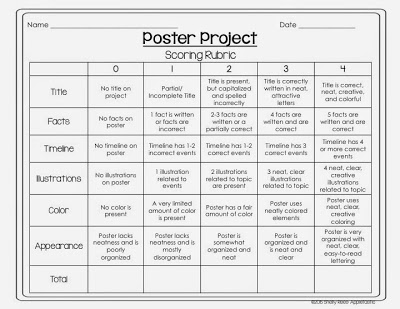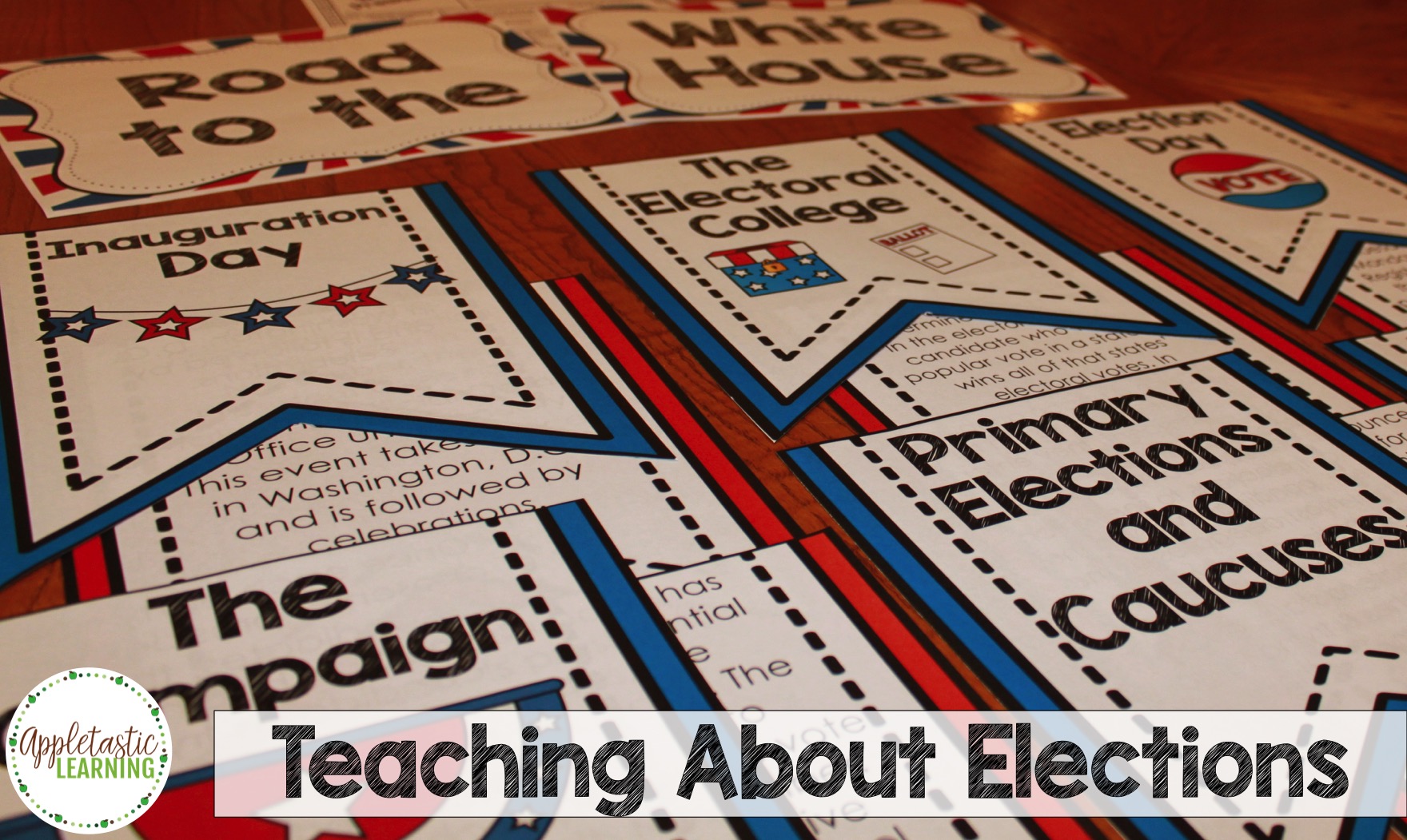

Teaching the Election Process to students is a necessary part of helping our students understand how the government works and what a citizen’s role is in electing our governmental leaders. An election unit does not have to be textbook-boring; it can be fun, interactive, and highly engaging! The Road to the White House is an election unit your students will love and talk about for months and years to come.
Teaching about politics can be tricky. We all have our thoughts and opinions on the government and the candidates. While it is a teacher’s responsibility to educate students about the election process and how the government works inside a system of checks and balances, it is not the teacher’s duty to instill his or her own political beliefs or preferences into her students’ young minds. I do believe that it is fully possible to introduce the political candidates in a current race and share their specific stances on given topics without showing bias toward one candidate or another. Presenting facts and information, not our own opinions, is our job.
Here’s how I have taught the election process in my own fifth grade classroom. I call the unit “Road to the White House,” and my objective is for students to understand the main steps a candidate takes as they run for the office of President of the United States.
We discuss each of the steps and also talk the amount of work involved in campaigning for office. As we learn about each step, we add a foldable (flap-like door) to our notebooks. Beneath each flap, we either write about that step or glue in place a provided information box.
Once we have all the steps of the Road to the White House in place, we number them in our notebooks. I also have students add arrows from step to step to further solidify the sequence.
I also create a bulletin board that has the same information as the students’ notebooks. The steps on the Road to the White House are also placed in sequential order on this display. I look at bulletin boards as another opportunity for learning and reinforcing concepts we are learning in class. For practice and review, you can take down the steps and challenge students to put them correctly in order using push pins! When students are lined up to leave the room during breaks, the line forms next to the bulletin board. I encourage them to use that time to quiz each other and ask questions. Amazingly, they do just that!
I still find it fascinating that a presidential candidate can lose the popular vote, but still become president because of the electoral vote. My students are also amazed when they learn this!
I hand out an electoral college guide, information sheet, and map. We talk about which states have the most electoral vote power and why that is. Then, we locate our own state on the map, identify its number of votes, and talk about why a candidate might want to spend his or her time and money campaigning in our state instead of others.
Once my students have a basic understanding of the electoral college and how it works, we complete a simple simulated activity. In this exercise, my fifth graders look at a map showing which states 3 candidates each won in an election (I use the Republican, Democratic, and Independent parties for this activity). Using the map, they calculate the number of electoral votes each candidate receives and then determine the winner of the election. We complete this activity in small groups, but each student fills out their own maps and forms, which are then added to their notebooks.
Now that my students have a much better idea as to how a person is elected as President of the U.S., we talk a bit about some interesting facts and history of voting and elections. After giving each student a sheet of Presidential Election Facts, I have them work in small groups of 3-4 to read through and discuss each fact on the sheet. Once all groups have finished, we meet as a class, and I ask them to share the fact they found to be the most interesting and then to tell why. This is always a fun discussion between a group of 10 and 11 year olds!
Once the discussion has finished, I have students color and cut the fact cards and add them to the pocket in their notebooks. I usually play patriotic music for students while they are completing the activity, which they seem to enjoy!

If you are interested in purchasing my “Elections and Voting Process Interactive Notebook and Mini Unit,” you can find it HERE in my Teachers Pay Teachers store!
Check out these other blog posts for ideas on teaching social studies concepts in a fun and engaging way.
Thanks for stopping by! Happy Teaching!

Hi, I’m Shelly! Thank you for being here. I love helping third, fourth, and fifth grade teachers with fun and engaging activities that require no to little prep! Let me help you by taking some of the stress and work off your plate.

©2022 Shelly Rees. All Rights Reserved.